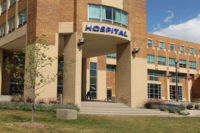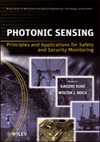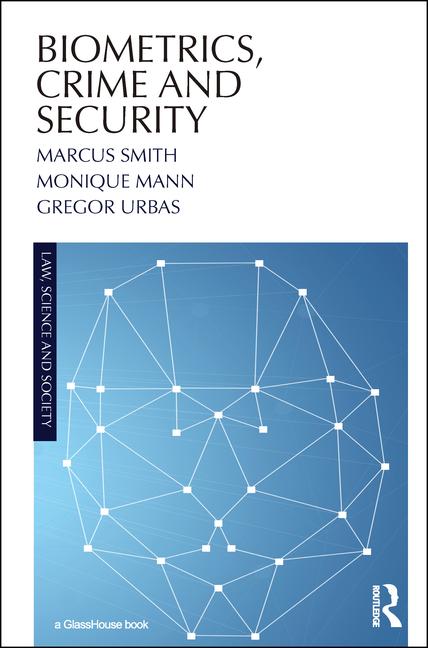First Faces and Protected Spaces
Security Training for Receptionists and Greeters


|
Receptionists and employees that are in a greeter type of position in a company carry with them a responsibility that has a definite effect upon the success of an organization: making a good first impression. It has been said many times: you do not get a second chance to make that first impression, but there is much more to this type of job than most people imagine. Receptionists, greeters and information clerks have to answer telephones, route and screen calls, greet visitors, respond to inquiries from the public and assist with way finding and providing information about the organization. Some are responsible for the coordination of all mail into and out of the office and for the delivery of packages and parcels and courier pick ups. There are myriad other functions that these employees provide for companies on a daily basis, but often they are overlooked when it comes to one of the most important roles that they can play – contributing to the overall security of your facility, employees and assets.
Receptionists and greeters can contribute significantly to the security of an organization by helping to monitor the access of visitors (a function that has become increasingly important) as well as being the “eyes and ears” of security. Security at any organization should be every employee’s responsibility, and your receptionists and greeters are certainly your first line of defense when it comes to spotting and reporting suspicious activity, stopping or identifying unwelcome visitors and protecting the perimeter of the facility. With the appropriate training on what to look for and how to respond to unusual activity or adverse incidents, these employees can be a huge asset and a force multiplier to any security program.
The first step is not to determine if these employees need training, but rather how much training and what types they should receive. One method is to conduct a risk assessment of the area based upon some objective security related issues that might occur and then formulate the probability and severity of the issue and determine how much risk actually exists. This step is especially important at larger, more complex organizations with multiple entry and reception points and differing levels of potential threats. For example, in a hospital setting, you may have a reception desk near the emergency department that routinely deals with persons that are ill, injured, emotionally unstable or suffering from behavioral health issues. Such a reception desk and its staff would likely need more specific types of training on how to handle the numerous types of security related situations that may arise than say a volunteer desk near the gift shop of the facility. Specific security related issues that might be considered include the probability of suspicious behavior (basically could occur anywhere at any time), dealing with peddlers or salespersons, those individuals that might be probing the facility to commit crimes of opportunity (common in office environments where internal security safeguards such the routine securing of personal items by staff is not observed) all the way up to direct threats of violence or physical assaults.
After this risk analysis is complete for a reception area, security training for the staff at these locations should be separated into levels or tiers based upon the overall risk and probability of a security related event. There should be a basic training program for all receptionists and greeters which educates them on issues such as what constitutes suspicious activity, what is their role in reporting such activity and what countermeasures currently exist that might help them in this task. As you progress up along the continuum of potential threats and their probability, a higher tier of training might include de-escalation techniques and how to deal with angry or intimidating behaviors and the warning signs of aggressive and non-complaint subjects. A third tier might then include all of the previous information as well as how to deal with direct threats of violence or physical assaults up to and including active shooter scenarios. By using this methodology, the training programs can be broken down in sections and presented as a series of continuing education for staff, each successive program building upon the last.Once these issues have been evaluated for their probability of occurrence as well as their impact upon staff, property and business operations, the levels of preparedness should then be considered. In an area with a high probability for emotionally charged confrontations involving the receptionist (such as the emergency department desk referred to earlier) certain countermeasures should be in place such as security in or near the immediate area, panic/duress alarms, a “safe room” that could be used by staff to shelter in place should an event occur, etc. While such countermeasures are very useful, the training on how and when to use such countermeasures is one of the most overlooked aspects of such preparations (after all, a panic button serves no purpose if the people working there are not aware of its existence or do not know when or how to use it).
In the first tier of training, basic customer service, some scripts for how to deal with unhappy persons and what behaviors should immediately be viewed as unusual or suspicious should be discussed as well as some basics of the job that may relate to security such as way finding directions on a list of commonly sought destinations within the company (such how to get to the human resources office) and a review of visitation polices and procedures. Access control procedures, visitor and employee ID badging processes and the dangers of “tailgating” secure doors by unauthorized personnel are certainly issues that need to be addressed at this basic level. The potential threat of peddlers, unwanted solicitations and would-be thieves or “probers” and crimes of opportunity should also be discussed and how to successfully combat or report such attempts when they occur. Depending upon the duties and responsibilities of the receptionist or greeter, common social engineering scams or other such issues such as pretext telephone calls to solicit confidential information or the theft of mail or packages should also be reviewed.
A Higher Tier
For a higher tier security training program, the issues of how to successfully deal with upset, angry or irate customers or visitors should be included and should incorporate techniques not just for face to face confrontation but also how to respond to telephone calls that might lead to aggressive behavior or even threats of violence (such as bomb threats or threats to “shoot up the place”). There are many great programs that teach such techniques and these can easily be integrated into your existing training program or you can create your own based upon specific needs. Such programs should minimally include information such as warning signs and levels of anxious or irate behavior, the stages of verbal aggression and actions that the receptionist or greeter can take to de-escalate such behaviors such as appropriate communication techniques, proper physical positioning and how and when to retreat and summon additional assistance.
The highest tier of training would be a culmination of all previous levels of instruction plus advanced training on topics such as how to deal with physically threatening or aggressive actions, to include damage to property, attempts at unauthorized entry into the facility (i.e. forcing their way through an access controlled door), crimes in progress (such as assaults which might occur in or near the area which the receptionist or greeter might witness) and the most serious incidents such active shooter situations. Staff that is in areas where such incidents have a high probability should be well versed in what countermeasures exist, what their role is in the event of such a situation, how to summon help, and where they can withdraw to for safety.
While receptionists, greeters and other staff in such roles are often recognized as the first and last impression of a company, they should also be viewed as the first line of defense for the safety and security of all other staff, clients and visitors of the facility in which they work. These are positions that are critical to the overall success of any organization, and while security related issues may not affect them on a routine basis, it is imperative that they be well prepared should such an event occur. Their vigilance, timely reporting and intervention could easily mean the difference between a minor disruption and a significant incident. By empowering such employees with the knowledge to protect themselves and others, you will be recruiting active team members into your security program and improving your overall security culture.
Looking for a reprint of this article?
From high-res PDFs to custom plaques, order your copy today!









